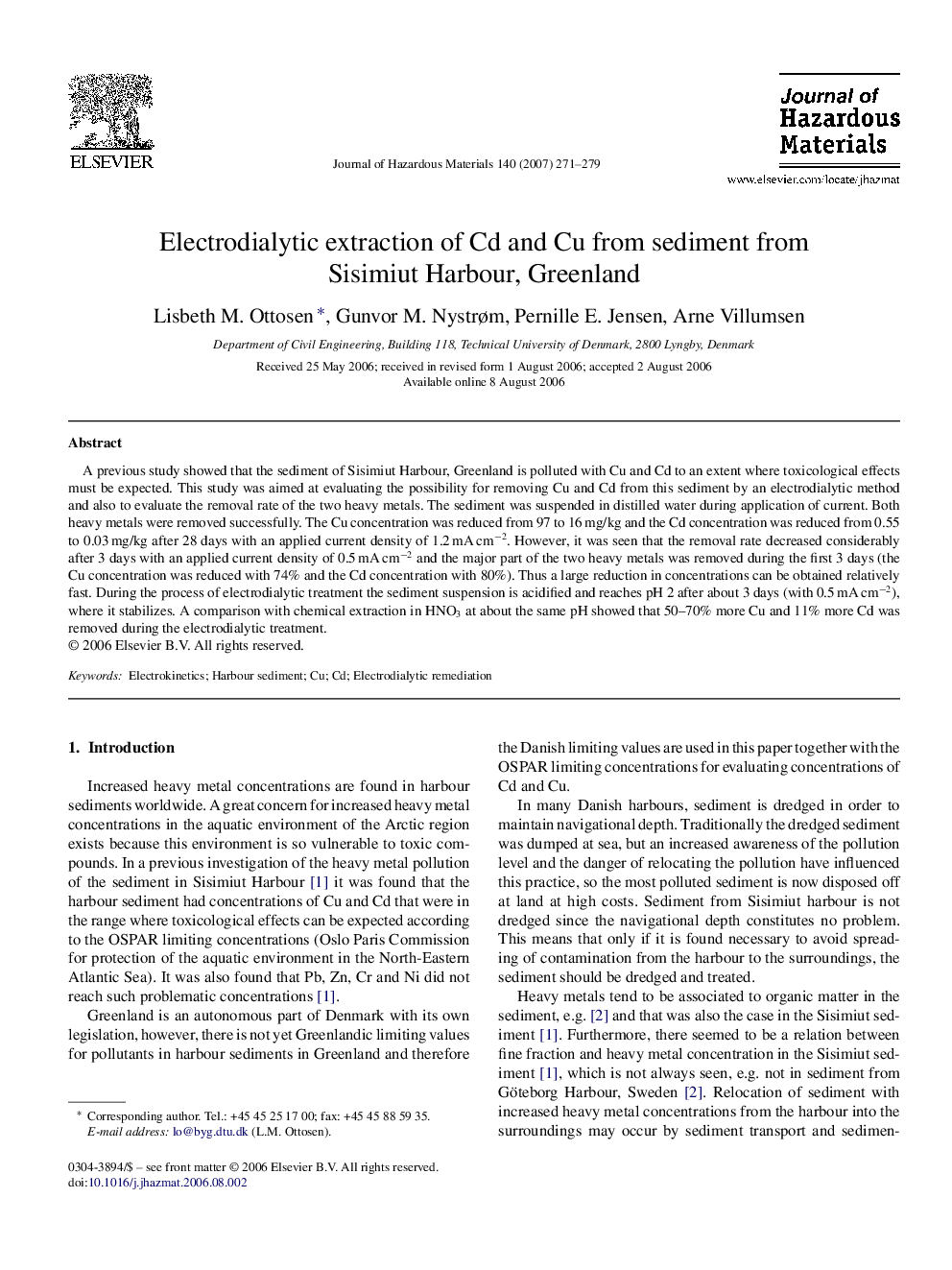| Article ID | Journal | Published Year | Pages | File Type |
|---|---|---|---|---|
| 585013 | Journal of Hazardous Materials | 2007 | 9 Pages |
Abstract
A previous study showed that the sediment of Sisimiut Harbour, Greenland is polluted with Cu and Cd to an extent where toxicological effects must be expected. This study was aimed at evaluating the possibility for removing Cu and Cd from this sediment by an electrodialytic method and also to evaluate the removal rate of the two heavy metals. The sediment was suspended in distilled water during application of current. Both heavy metals were removed successfully. The Cu concentration was reduced from 97 to 16Â mg/kg and the Cd concentration was reduced from 0.55 to 0.03Â mg/kg after 28 days with an applied current density of 1.2Â mAÂ cmâ2. However, it was seen that the removal rate decreased considerably after 3 days with an applied current density of 0.5Â mAÂ cmâ2 and the major part of the two heavy metals was removed during the first 3 days (the Cu concentration was reduced with 74% and the Cd concentration with 80%). Thus a large reduction in concentrations can be obtained relatively fast. During the process of electrodialytic treatment the sediment suspension is acidified and reaches pH 2 after about 3 days (with 0.5Â mAÂ cmâ2), where it stabilizes. A comparison with chemical extraction in HNO3 at about the same pH showed that 50-70% more Cu and 11% more Cd was removed during the electrodialytic treatment.
Related Topics
Physical Sciences and Engineering
Chemical Engineering
Chemical Health and Safety
Authors
Lisbeth M. Ottosen, Gunvor M. Nystrøm, Pernille E. Jensen, Arne Villumsen,
